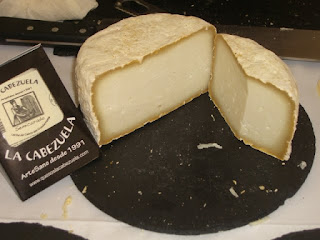Sitting in O’Hare for my seven hour layover, I’m still not sure it has dawned on me that I’m about to leave the U.S. for almost two months, that I will be speaking only Italian, and that this isn’t just a two-week vacation. Somehow, however, I’m feeling pretty relaxed and calm about it all. Maybe it’s the mental haze of sleep deprivation, or maybe it’s actually true that the last couple of weeks of crazed planning have left me well-prepared.
I’ve researched vocabulary for farm life (my favorite: forcone for pitchfork sounds to me like a really big fork), being outdoors (fango is mud), and cooking alongside the hosts (pentola for saucepan). I’m hoping that I’ll have at least a little time during this adventure to need words like l’architettura, la scultura, and l’arte.
I’ve read a few blogs from WWOOFers who went before me, taking their advice on rubber boot covers, bug repellant and sunscreen. I’ve obtained my international driving permit (God help me), checked my passport expiration date, and opened a no-foreign-fee ATM checking account.
I’ve wrapped up my computer consulting work, hopefully leaving everyone in a stable state until I return in November. The stability of the house is another story: I have not filled the freezer with meals for two months or arranged for maid service, though I did make my stepson Nathan pinky-swear that he would not let his dad order Meat Lover’s pizza every night. I’m thinking that it will turn into subsistence on frozen ravioli and potstickers, but I may be pleasantly surprised.
I’ve tried to pack as minimally as possible, while still including clothing for sweating over grapevines, picking olives in cold rain, and traipsing with my mother from one ruin to the next in the hot Roman sun. Most challenging of all given most of what I’m bringing, Mom and I will be dressing up for my birthday dinner at a restaurant in Tuscany where Michael and I shared one of the most memorable meals of our lives. In the end, at the 11th hour, I broke down and brought “The Big Suitcase” despite all my efforts to the contrary.
Most difficult of all, I’ve said goodbye to my wonderful husband who has been so graciously supportive of this. I’ll strive my hardest to follow his parting advice to “really be there” and to “take it all in.” So when my next entries aren’t as long-winded as this, after your initial sigh of relief, you will know that I’m busy living “in the moment.”
Since this is my first time “WWOOF”-ing (World Wide Opportunities on Organic Farms), I only have a theoretical understanding of what lies ahead of me. The idea is that I’ll work for 5 or 6 hours per day on an organic farm, helping the hosts with whatever needs to be done, in exchange for room and board. WWOOF accommodations range from a BYO tent option to living in beautiful 18th century farmhouse bedrooms—if there are no guests at the time.
In some families, the volunteer is completely integrated into the household, sharing meals and even bathrooms. In other situations (none of which do I think I’ve agreed to), the volunteer lives with a group of other “WWOOFers” in a communal setting, like bunk beds in a barn loft. I’ll keep you posted.
The first farm where I’ll be staying produces serious cheeses. I had so hoped to be able to go to the biennial Slow Food Cheese exhibition this coming weekend, but accommodations were scarce and very pricey by the time my schedule had firmed up. But in a huge stroke of luck, my hosts will be exhibitors there, which means that not only are they serious about their cheese, but I’ll have a ride to and from the conference, which is no small thing without a car and with inconvenient train connections. Before and after the conference, I think I’ll be learning to make amazing raw milk cow cheeses in their dairy. Again, I’ll keep you posted.
I just received an email from the second farm I’ll visit, which confirmed that I will be helping her in the kitchen (serving guests in their small restaurant for 16), with the olives, and with the animals. Working alongside an Umbrian cook, enjoying the peace of the majestic olive trees and tending to the animals, which consist of “free range pigs, sheep, goats, chickens, geese, 2 cats and 2 dogs.” To quote Pee Wee Herman (and who doesn’t want to do that??), “I couldn’t be more excited!”


























